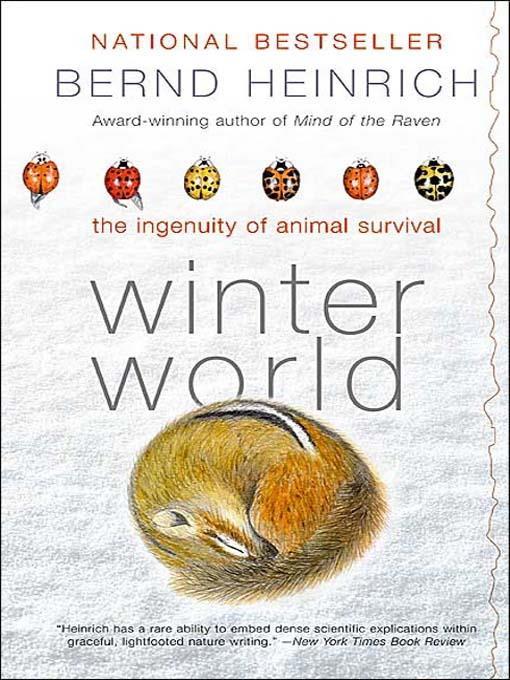
Winter World
The Ingenuity of Animal Survival
کتاب های مرتبط
- اطلاعات
- نقد و بررسی
- دیدگاه کاربران
نقد و بررسی

The author explores the adaptations of animals to extreme cold, explaining the important differences between torpor and hibernation. While the work is reminiscent of a series of science lectures, its moderate doses of chemistry, physics, biology, and botany will engage general readers. Heinrich's stories of taking students on wintry expeditions into the field make him sound like a wonderful hands-on teacher. Narrator Mel Foster reads with little emotion and a nearly mechanical tone. His renditions of the many genus and species names don't roll off his tongue with any fluency, giving him little resemblance to a life scientist. Since the author writes in the first person, Foster does not come through well as his surrogate. J.A.H. (c) AudioFile 2009, Portland, Maine

December 23, 2002
How do bears, bees, frogs and other creatures stay alive in a barren, subzero landscape? A veteran natural history author and University of Vermont biology professor, Heinrich (Mind of the Raven) uses the New England winter as a laboratory for investigating the adaptability and evolution of animals. In short, dense, lucid chapters that will intrigue both natural history buffs and neophytes, Heinrich discusses the survival strategies—such as hibernation and nest building—of mammals, birds and reptiles. He shows how bears endure months of hibernation without losing muscle mass or bone density, how an air-breathing snapping turtle survives six months at the bottom of a frozen pond and how honeybees keep the temperature in their hives at a balmy 36 degrees Celsius no matter how cold it is outside. The narrative is full of exuberant first-person observations from Heinrich's walks through the Maine and Vermont woods ("I hit the tree with an ax. One flying squirrel with huge black eyes and soft gray pelage popped its head out.... After I started to climb the tree I saw three
heads looking out. No—it was four!"), and he reflects on such subjects as the ethics of hunting and the implications of animal survival strategies—particularly the bear's ability to stay in shape without exercise—for human health. Throughout the book, Heinrich returns to the example of the mysterious golden-crowned kinglet, a bird whose tiny body—not much bigger than a walnut—loses heat so quickly that it seems to defy the rules of winter survival, and whose perseverance symbolizes the improbable, miraculous feats of endurance of all the animals of the north. Nature lovers will delight in this lively, fascinating study.

























دیدگاه کاربران